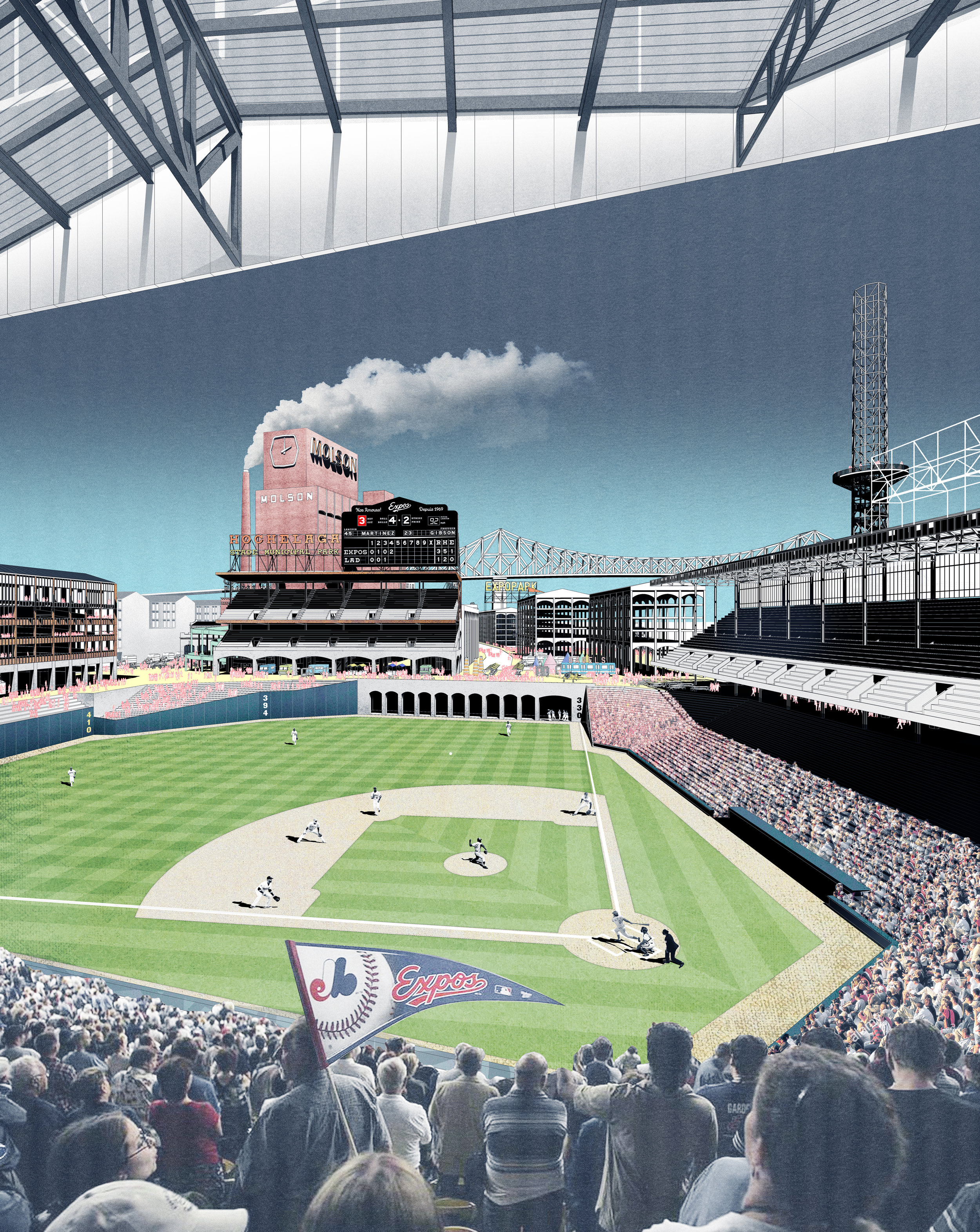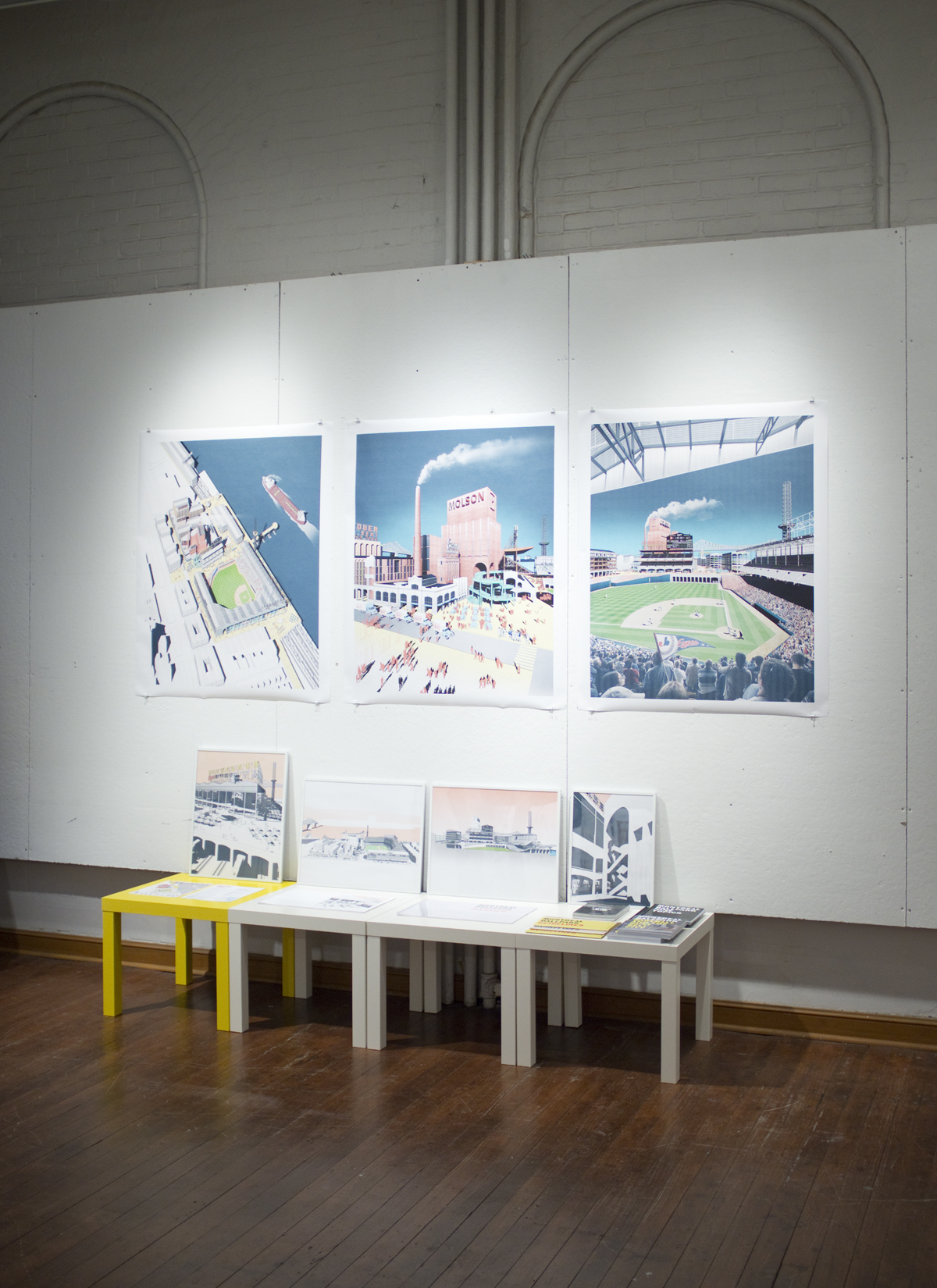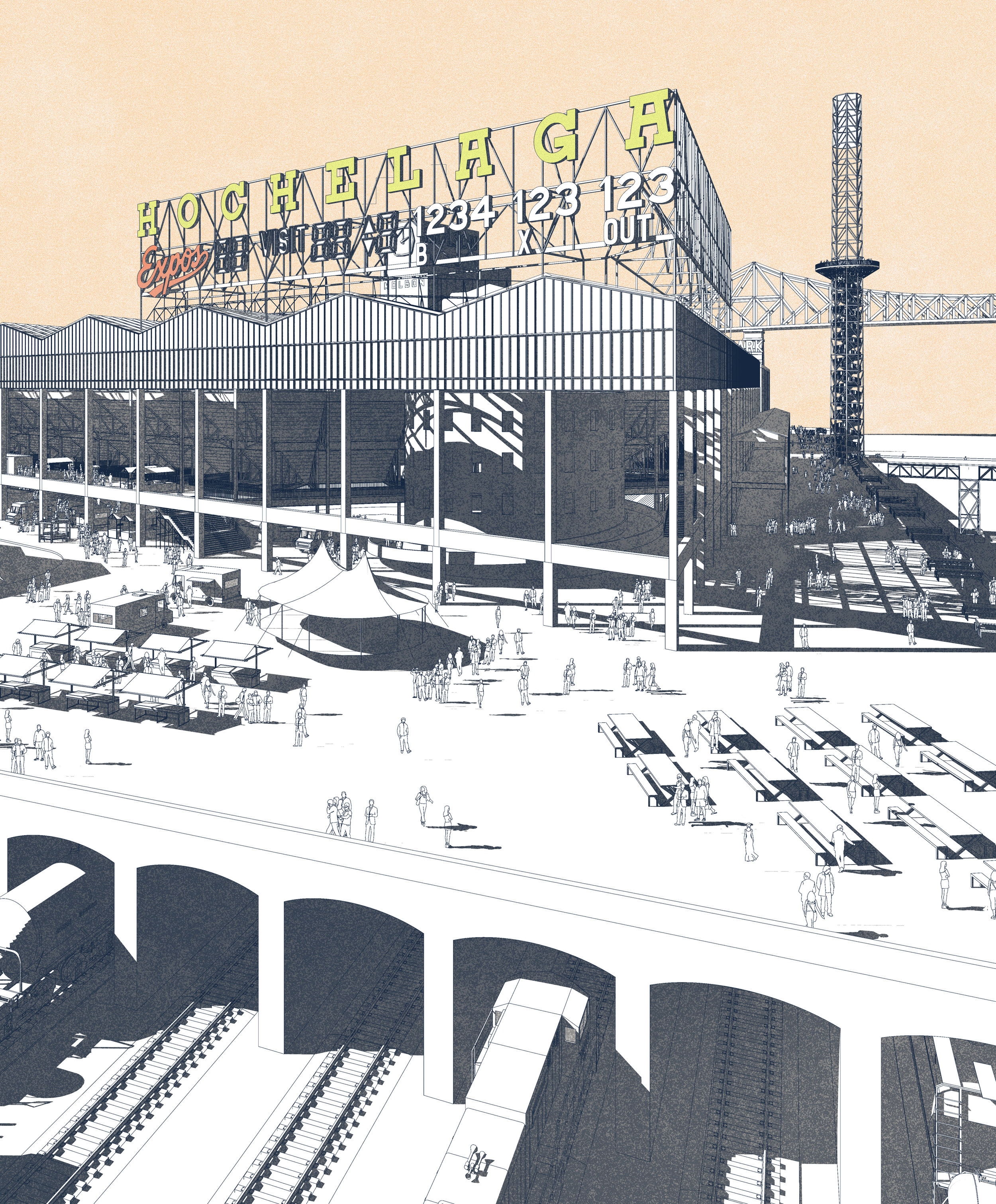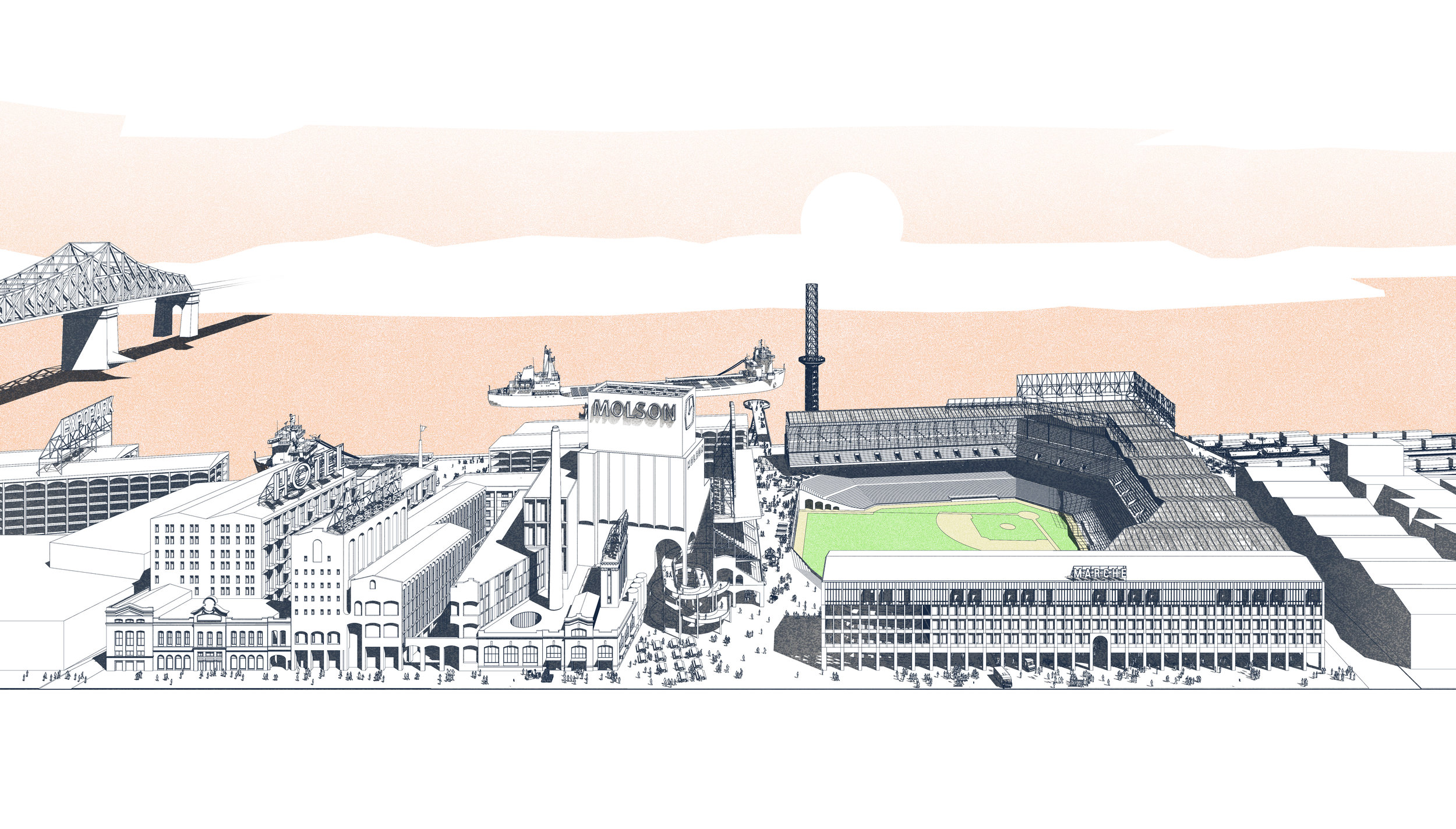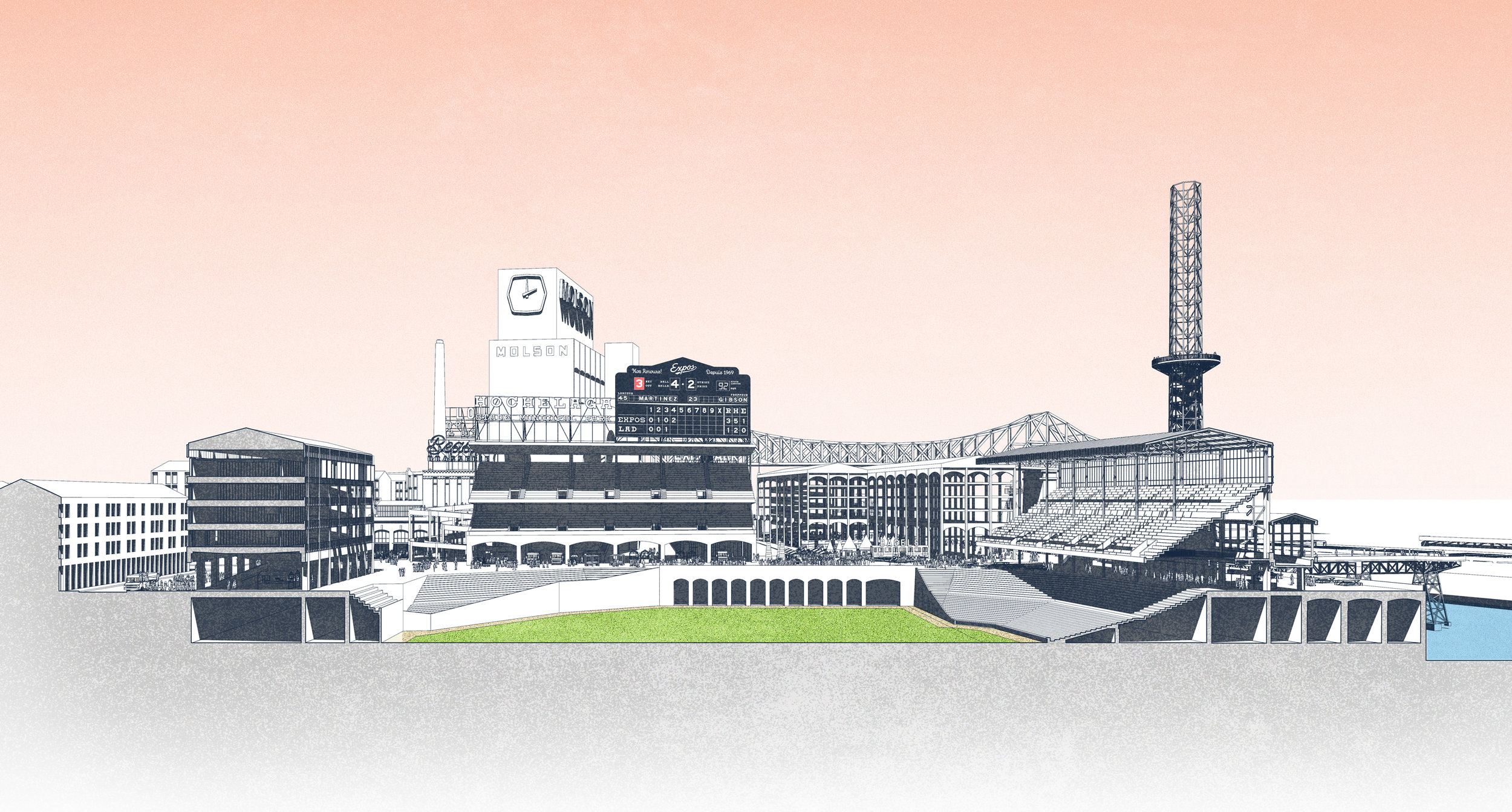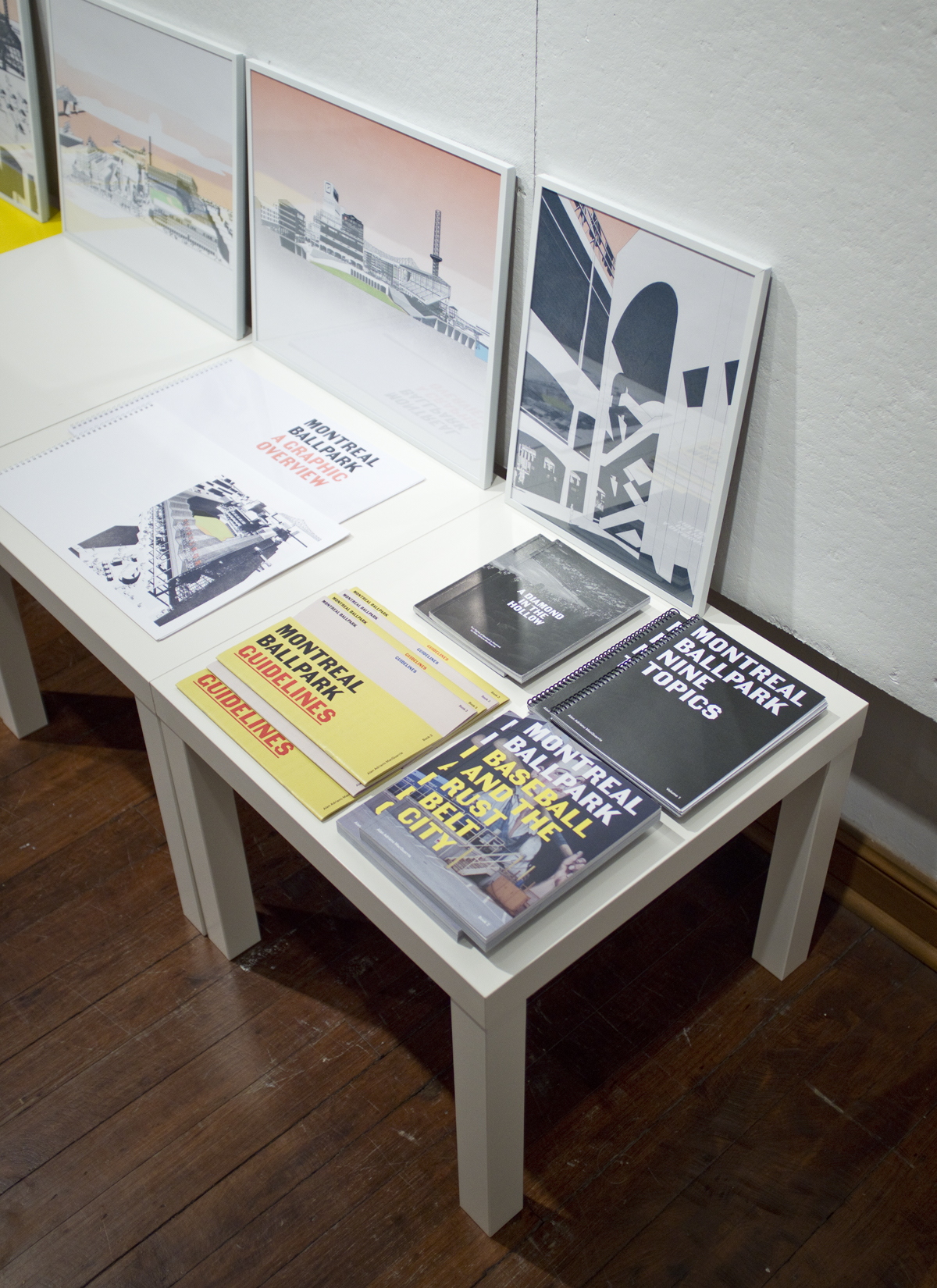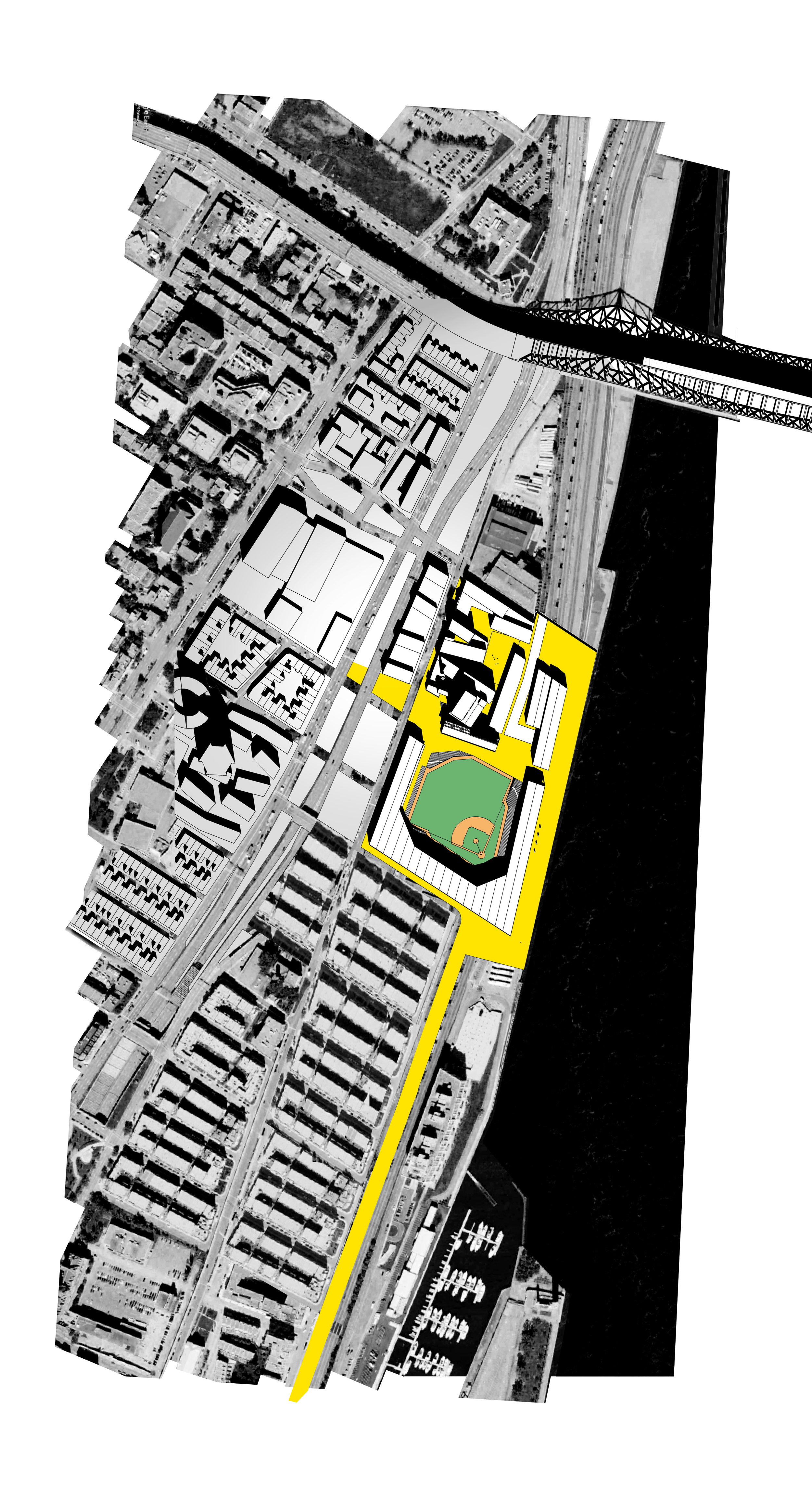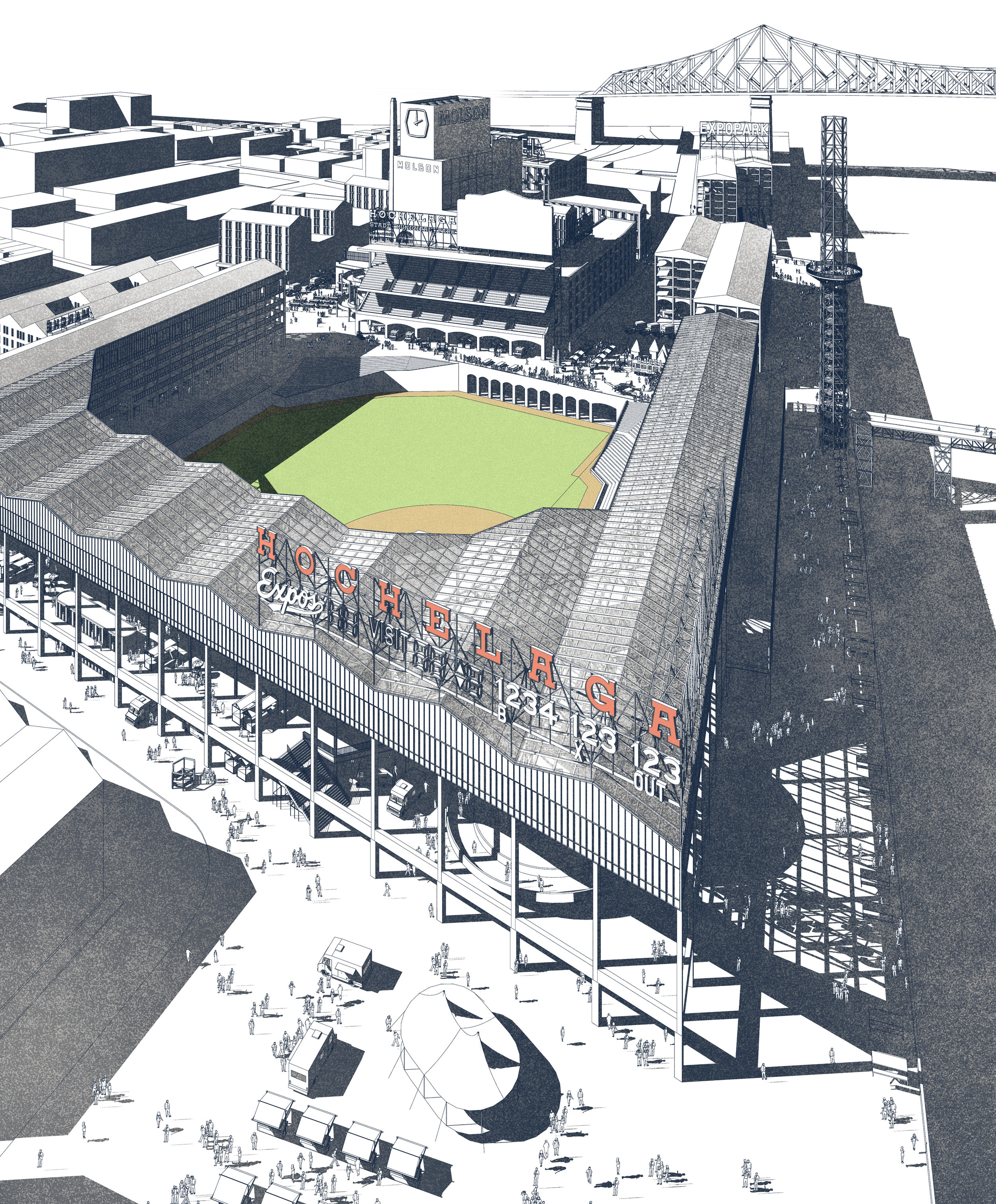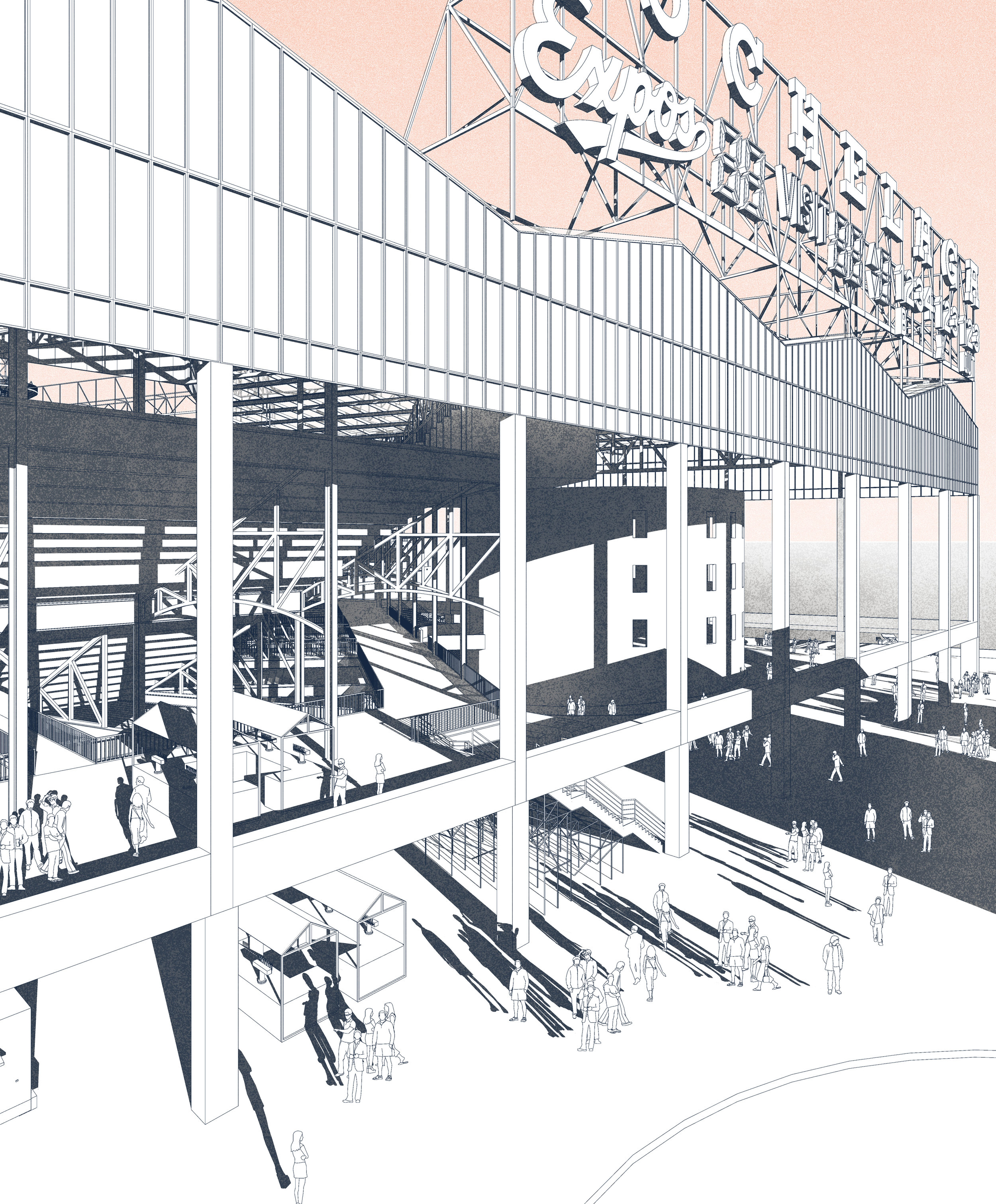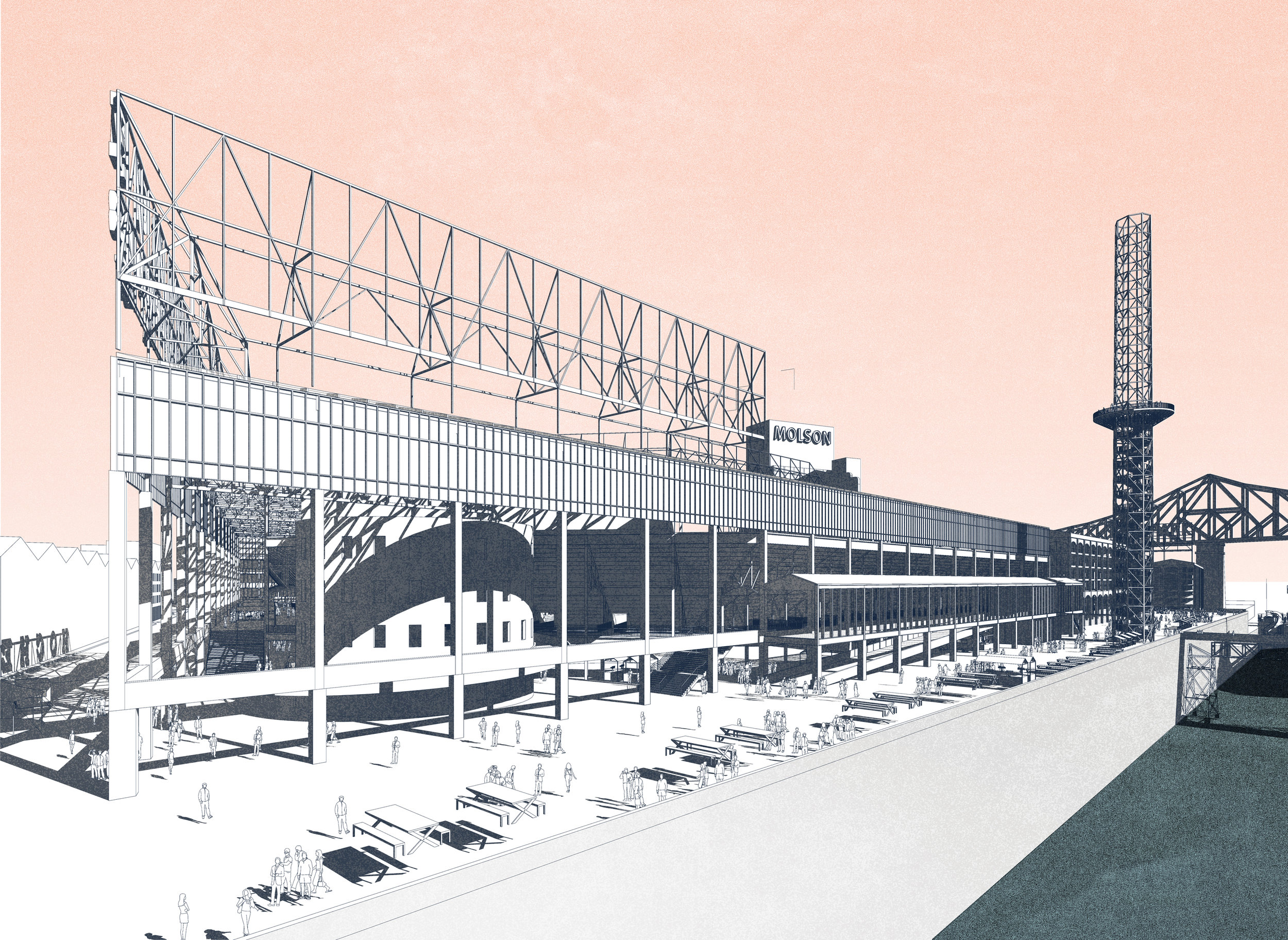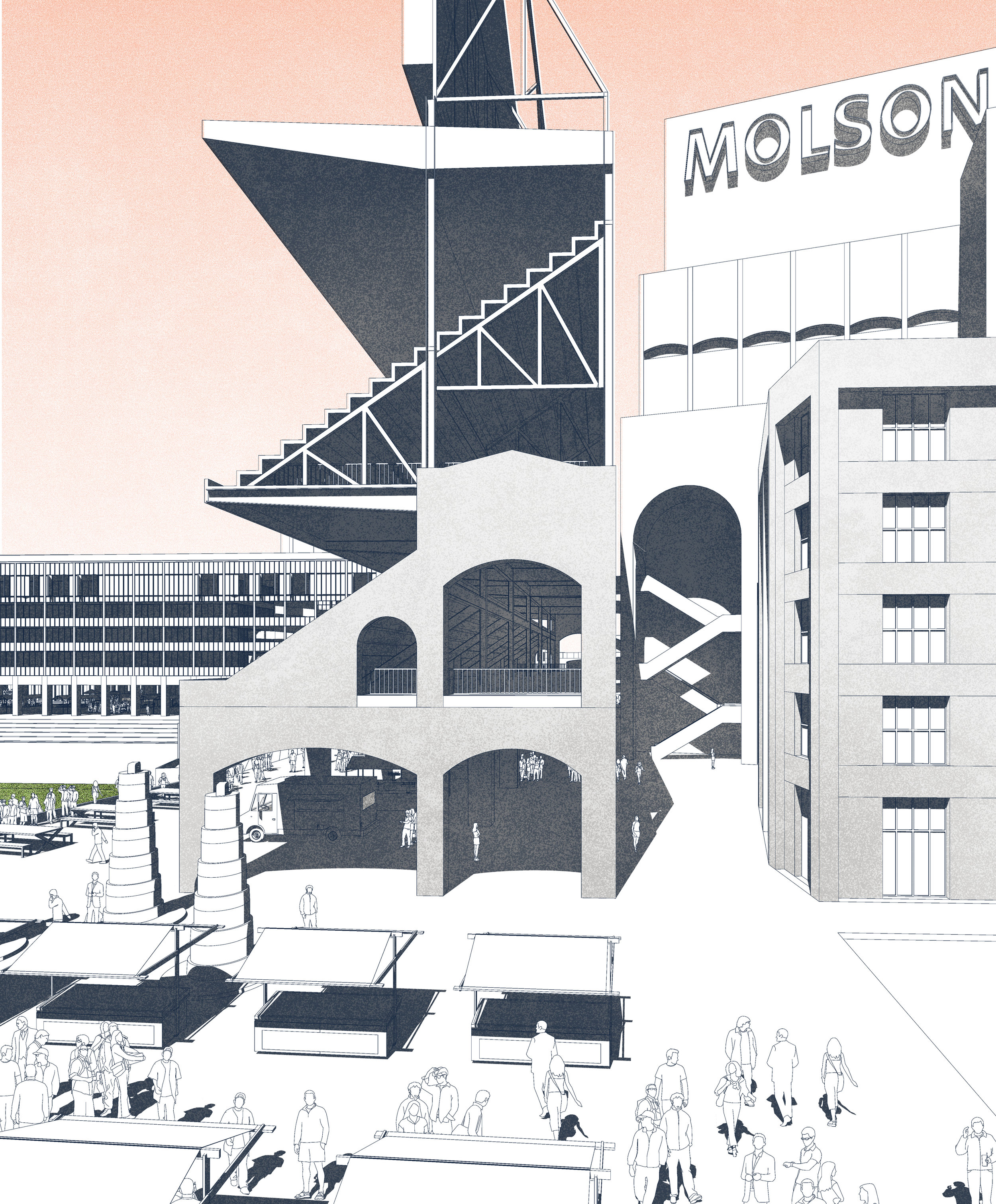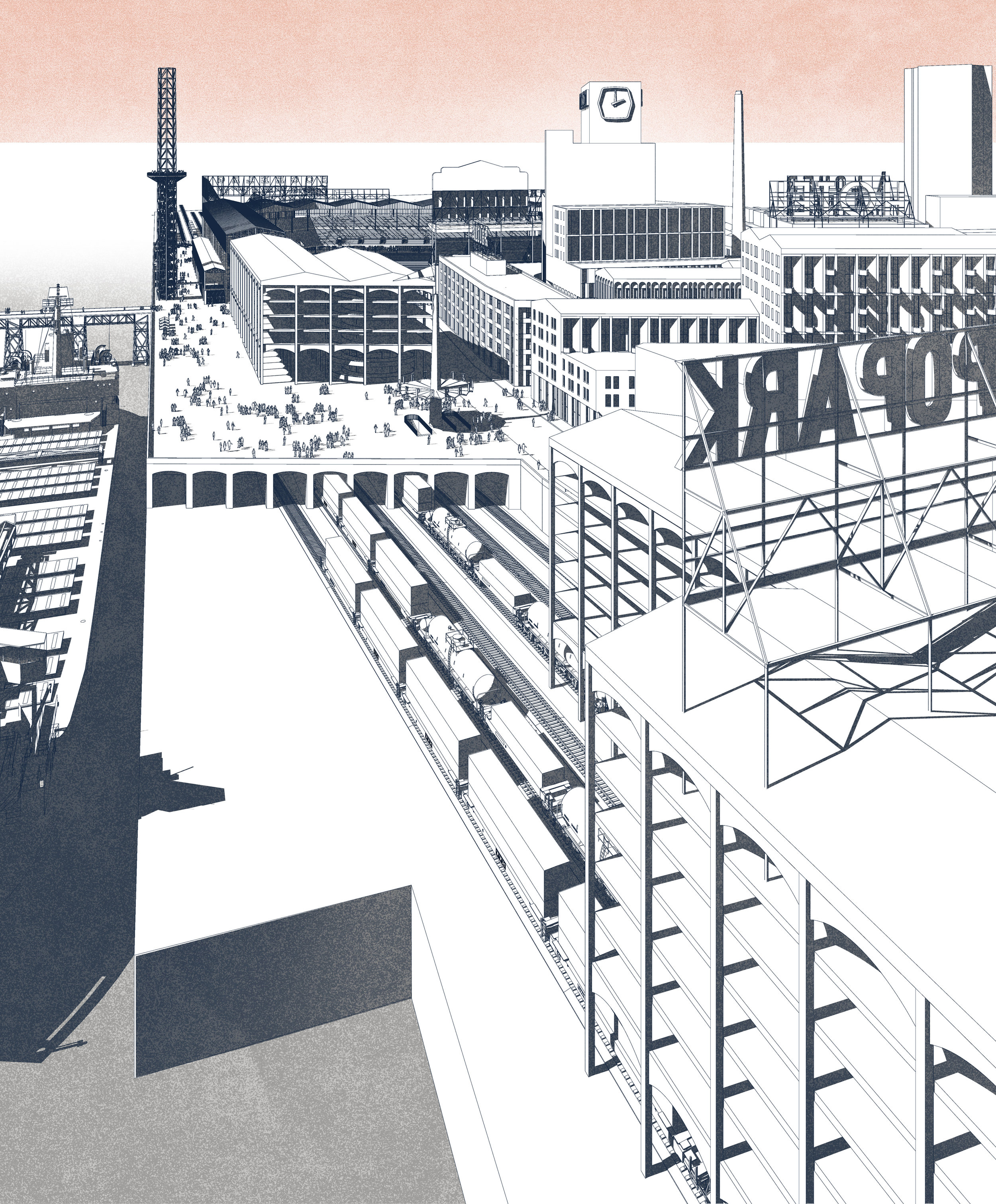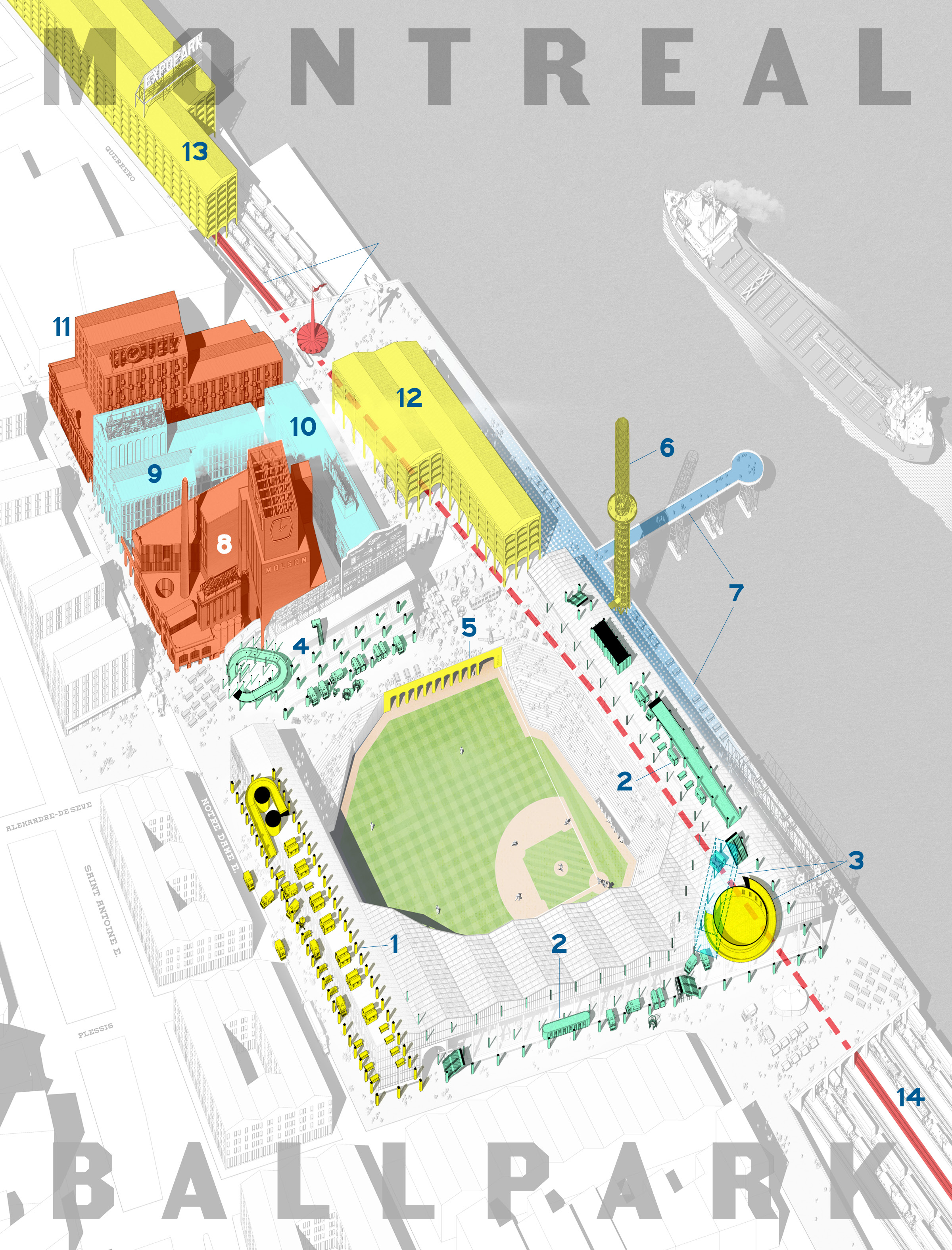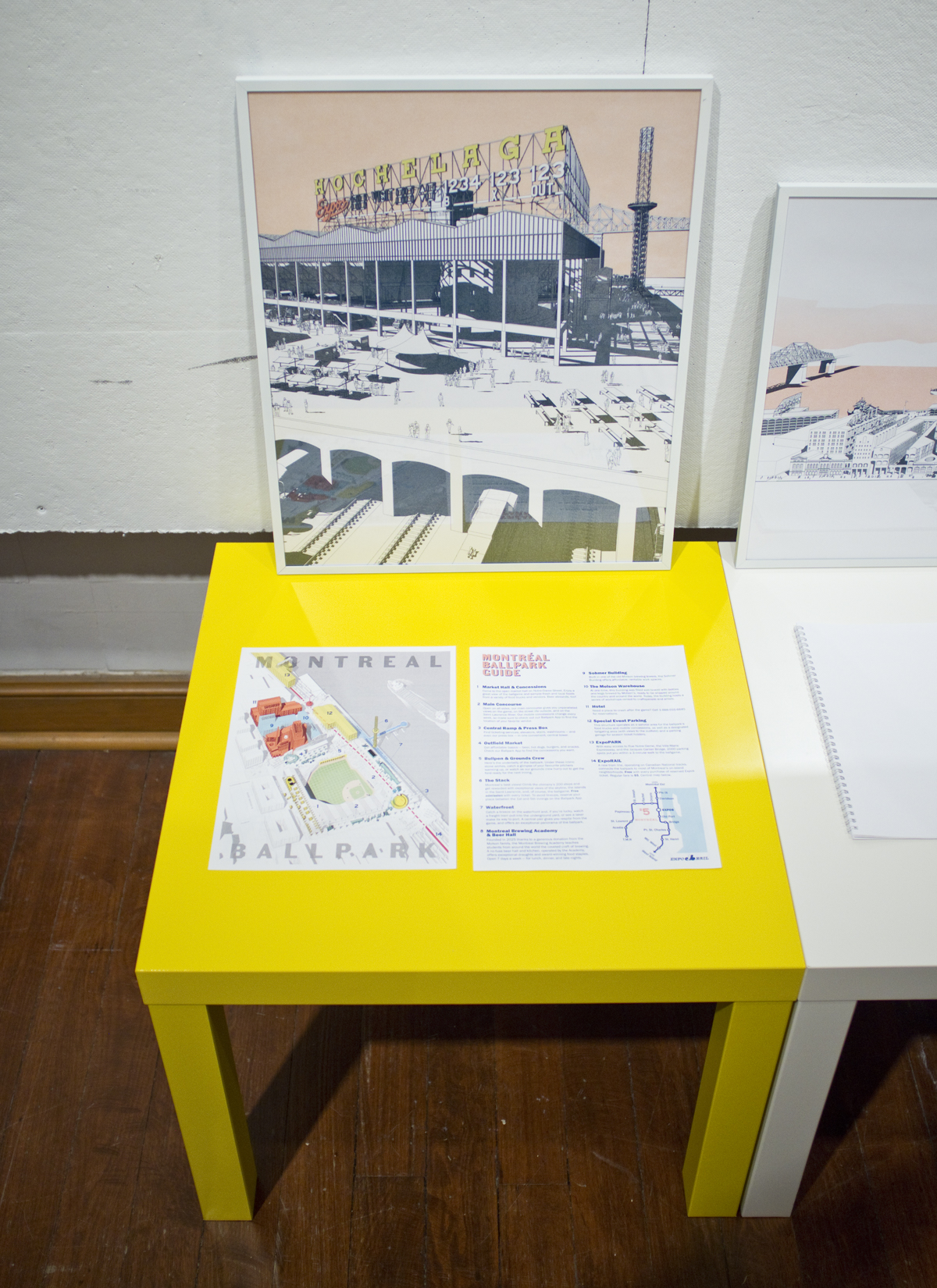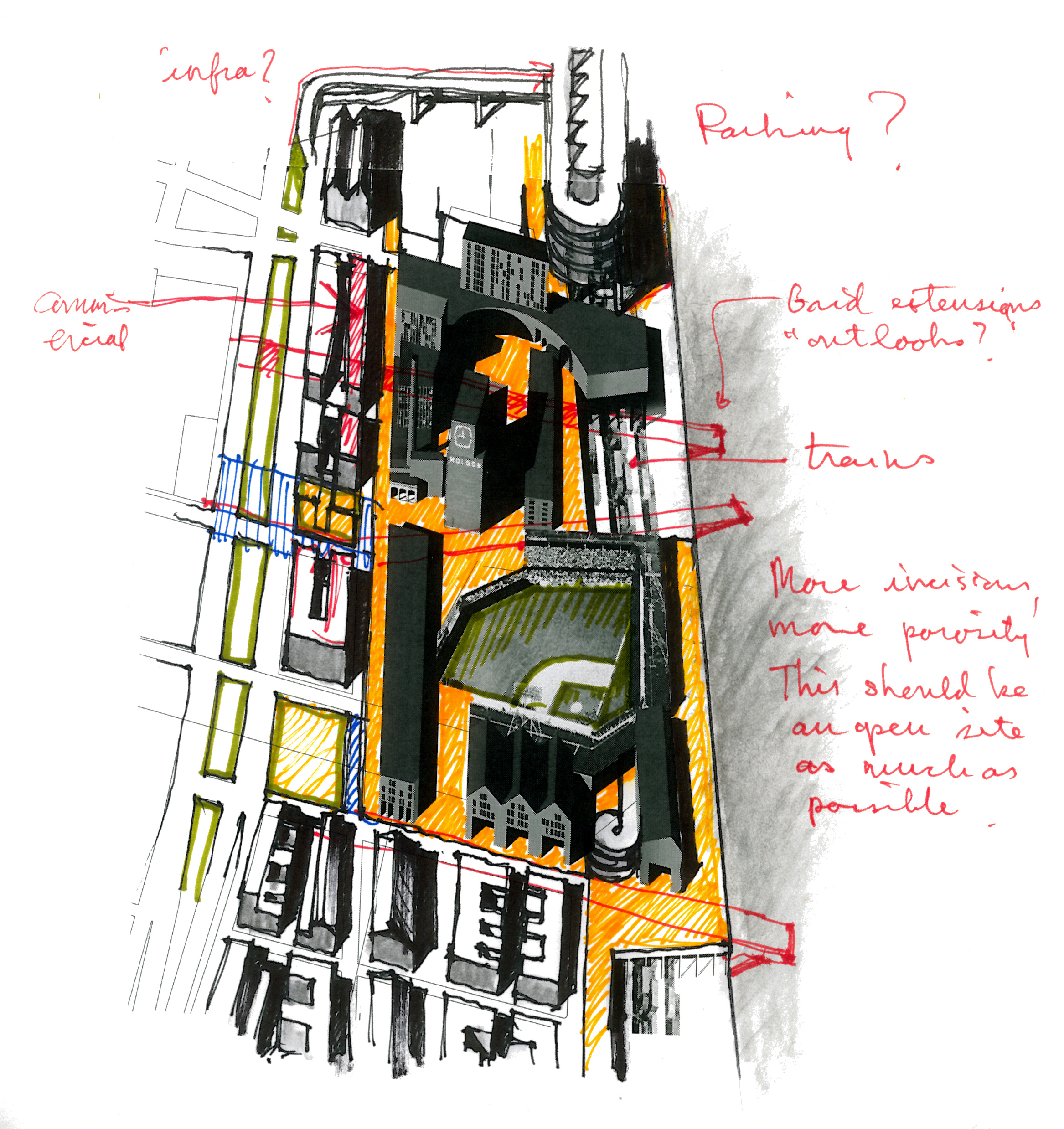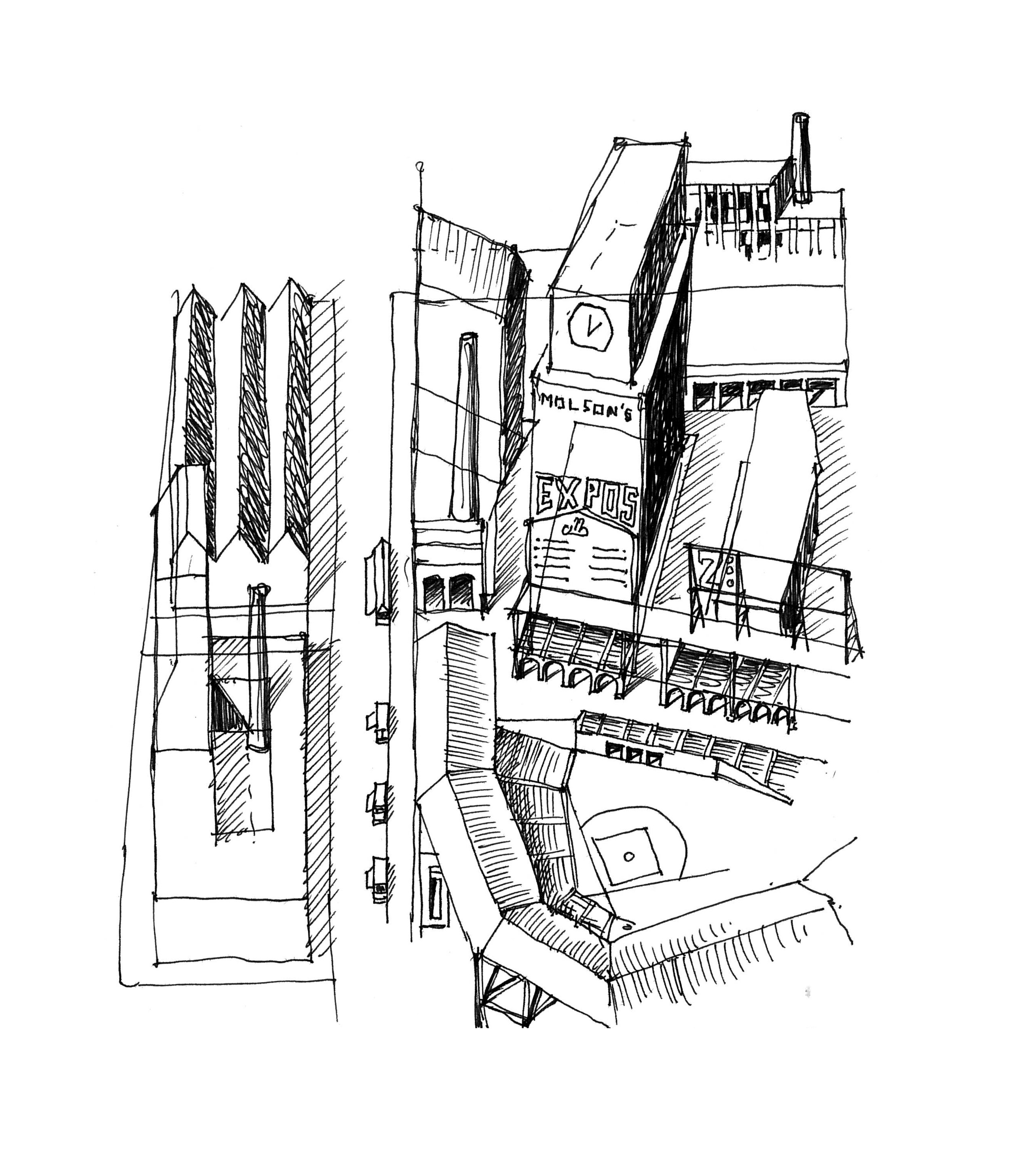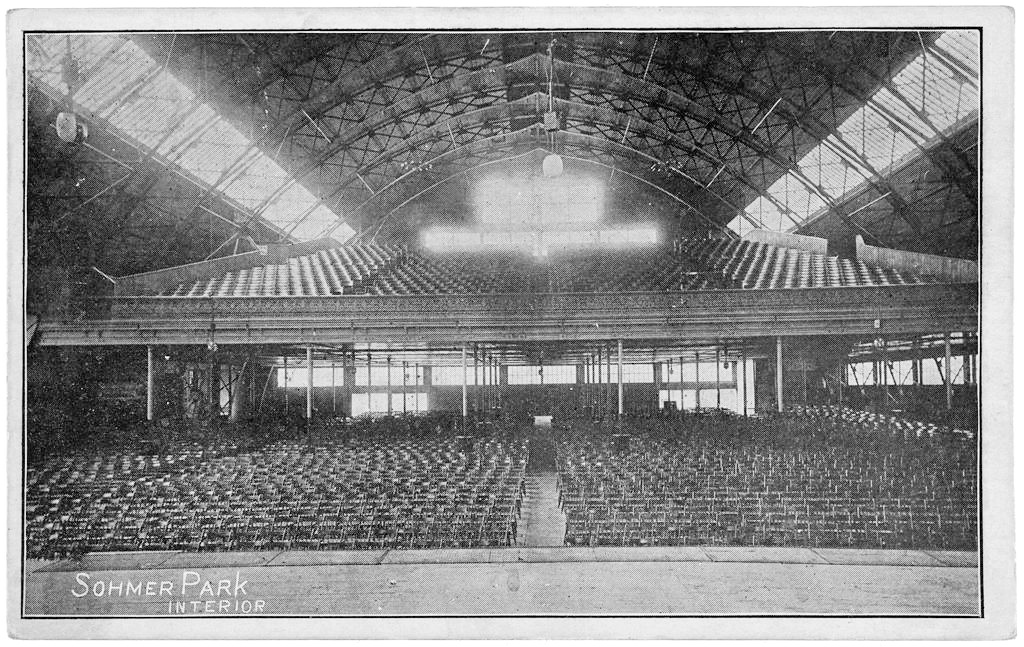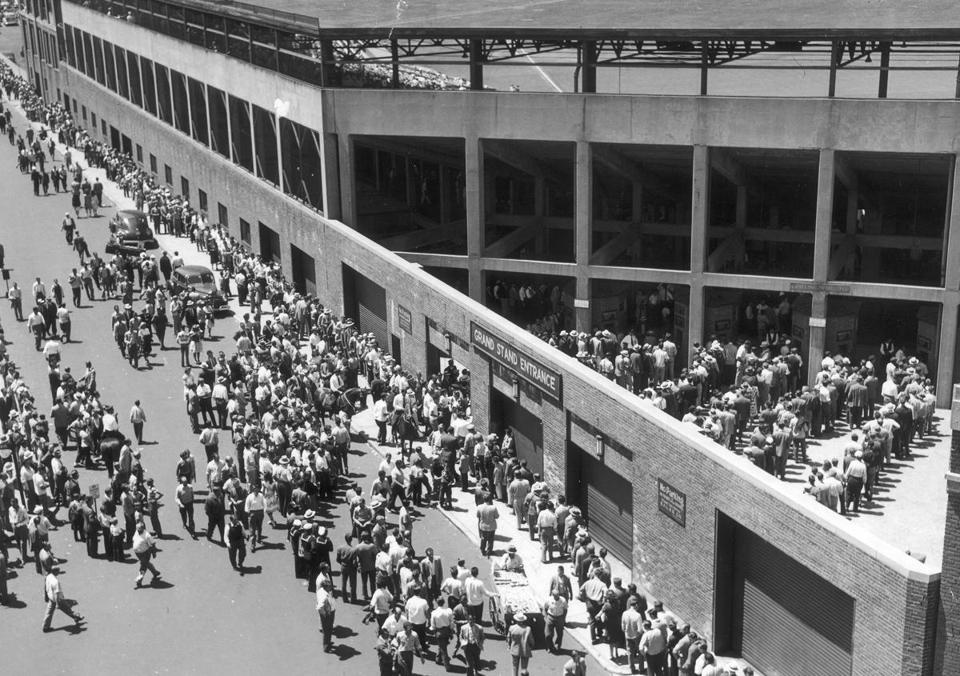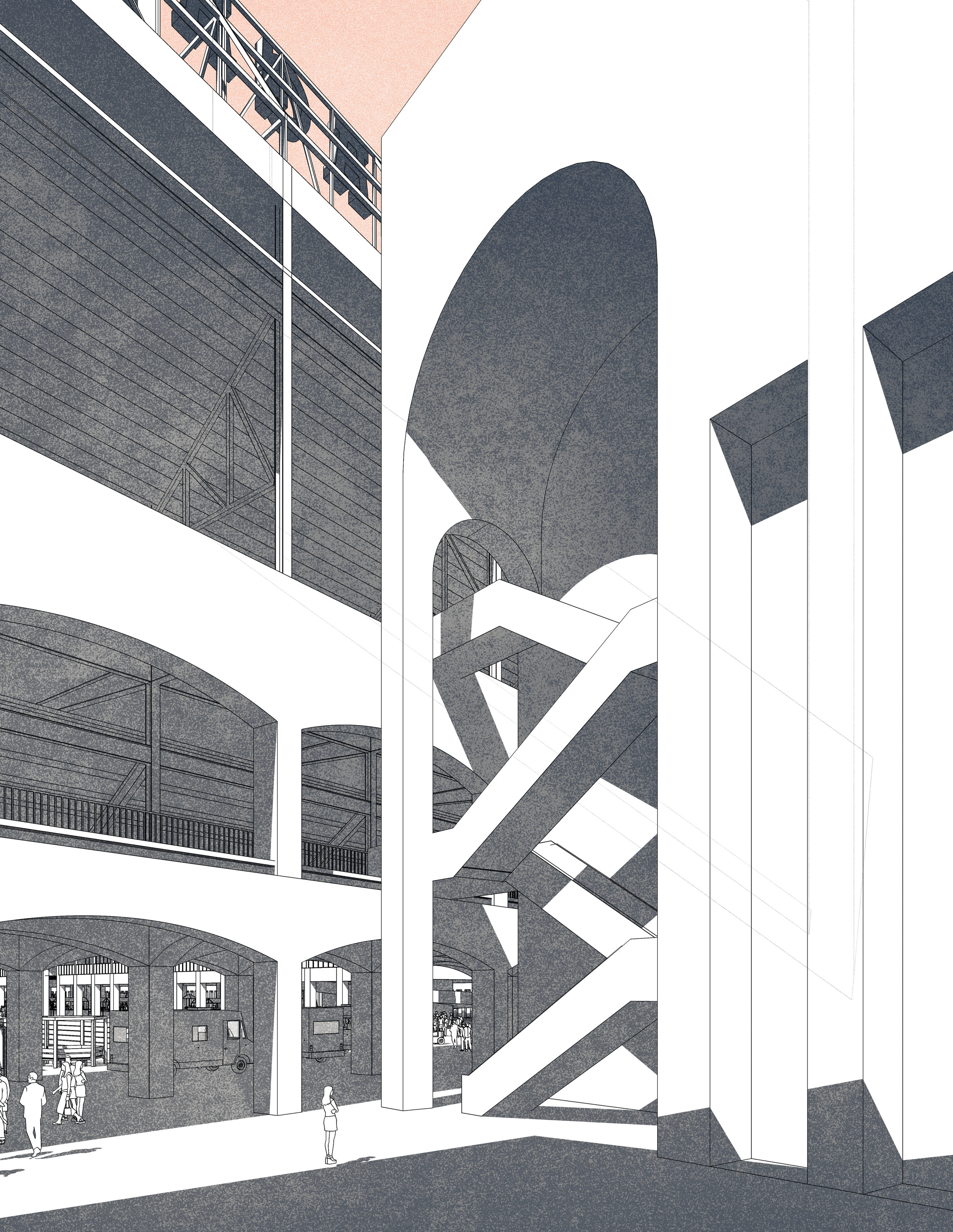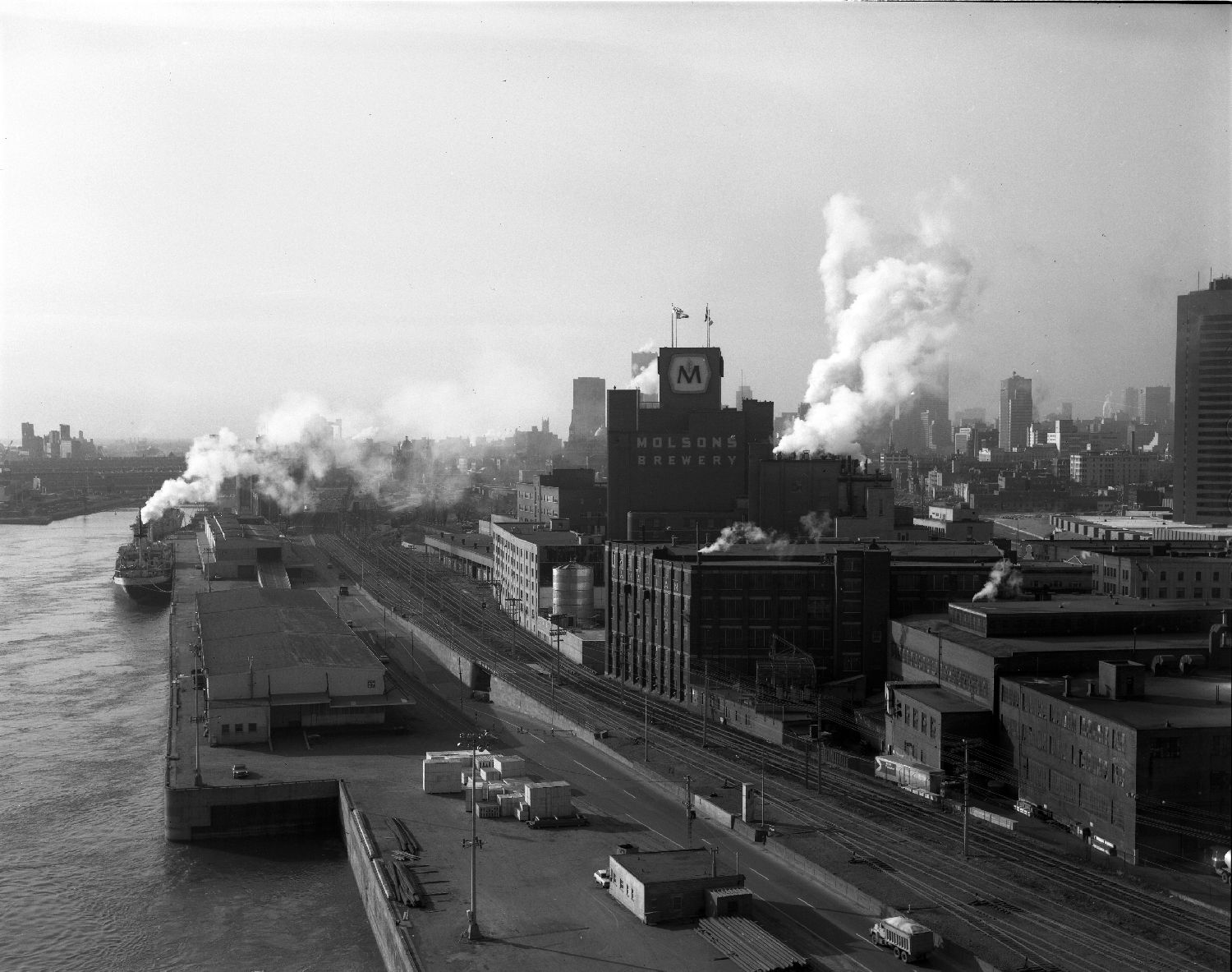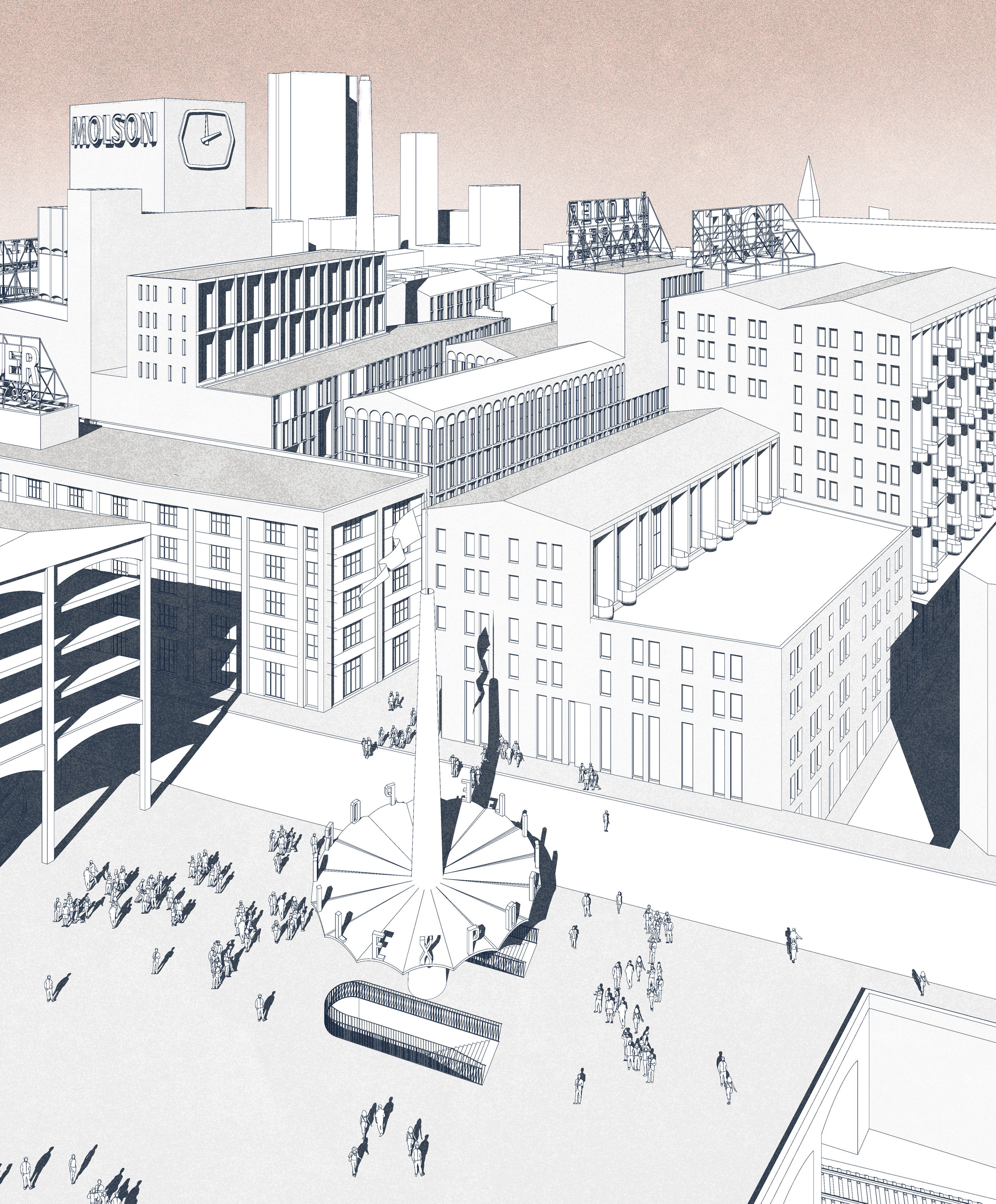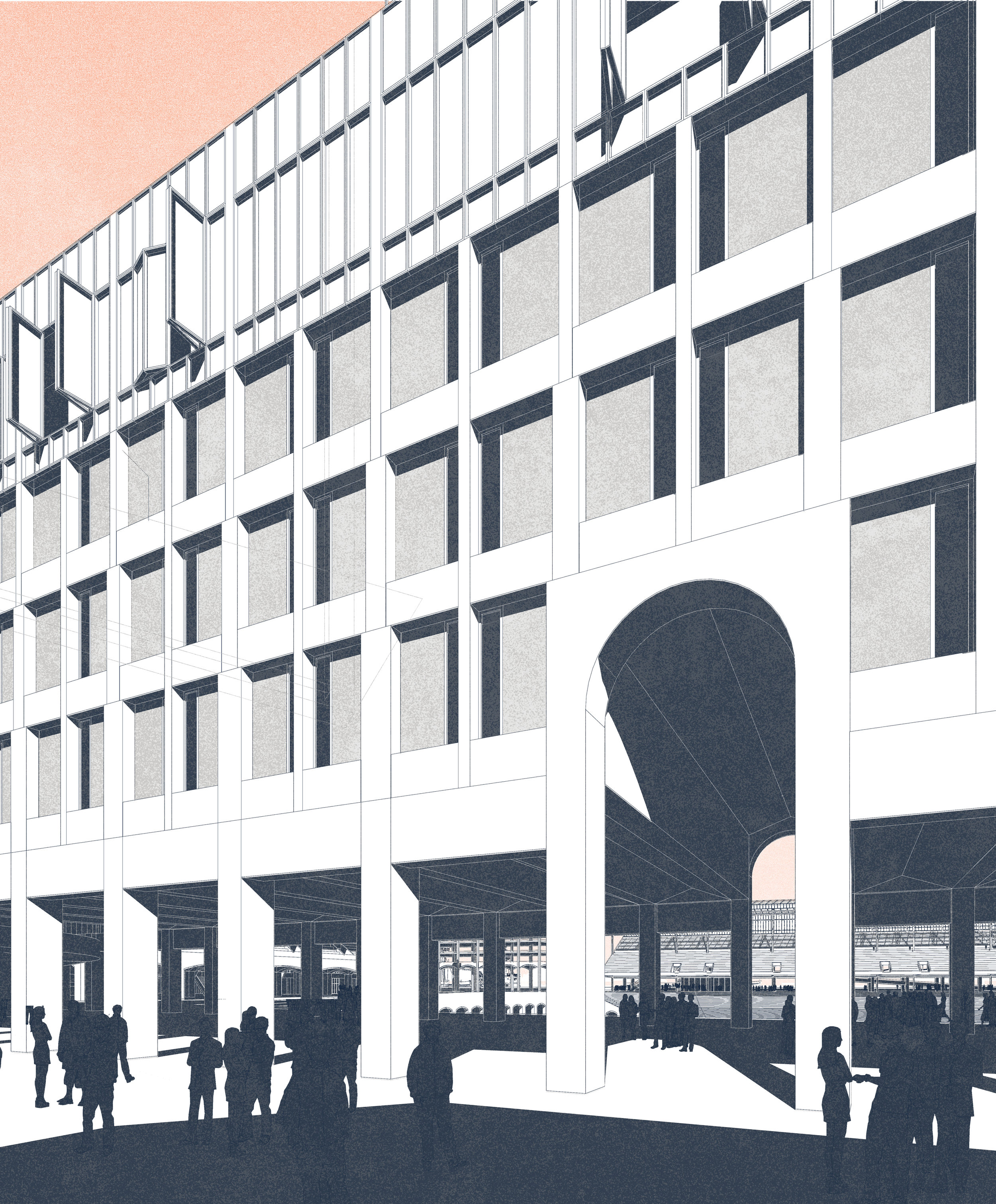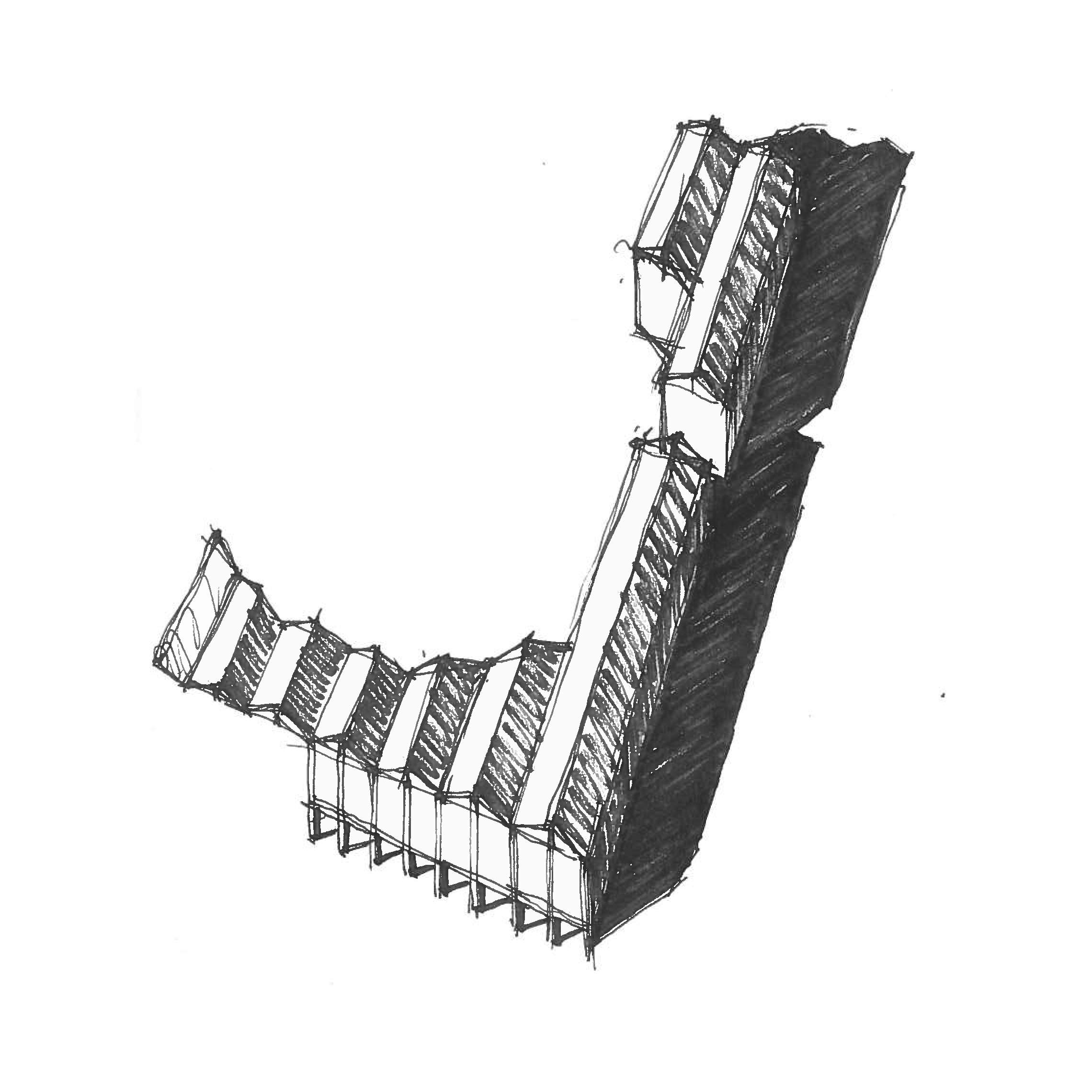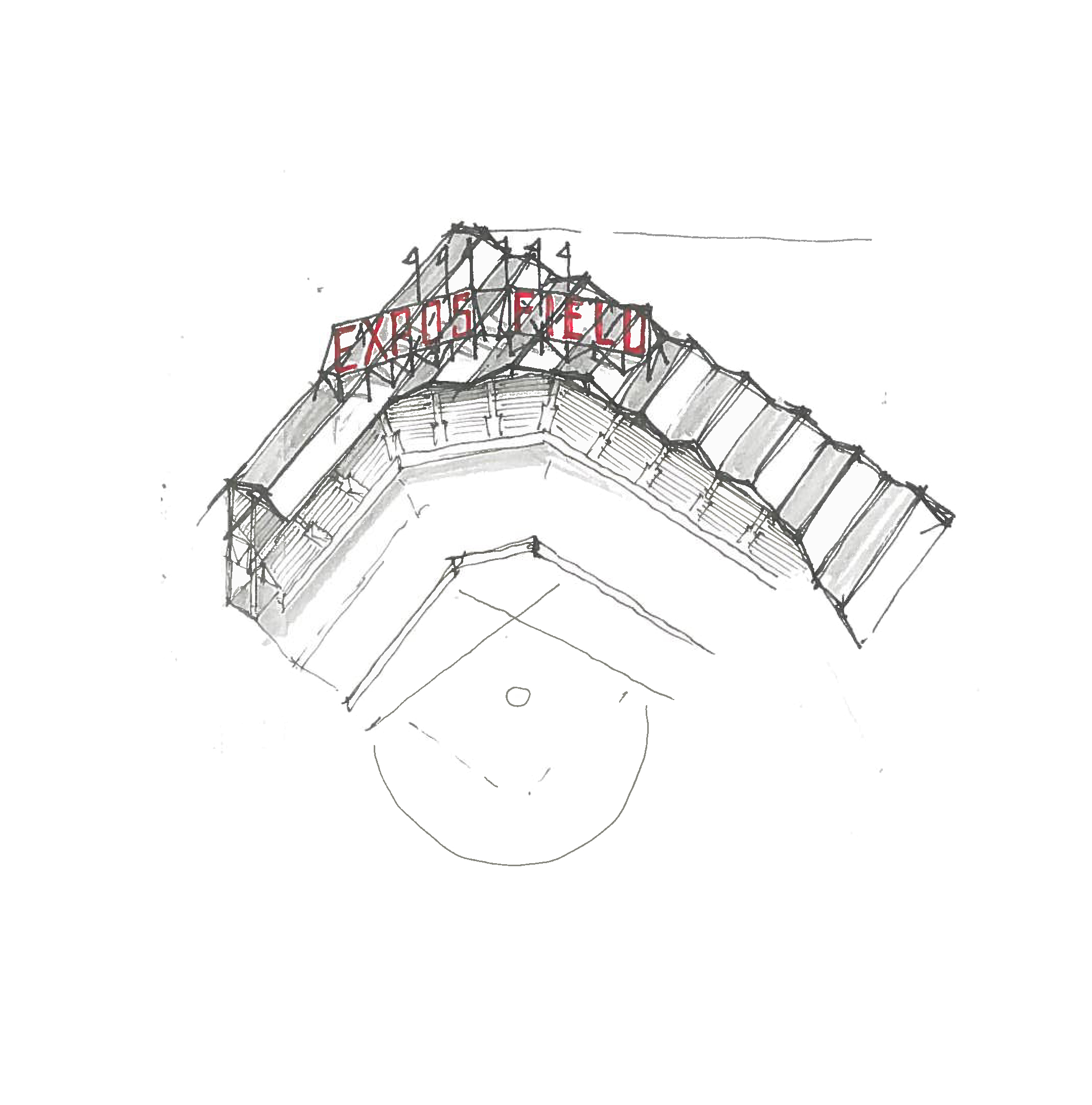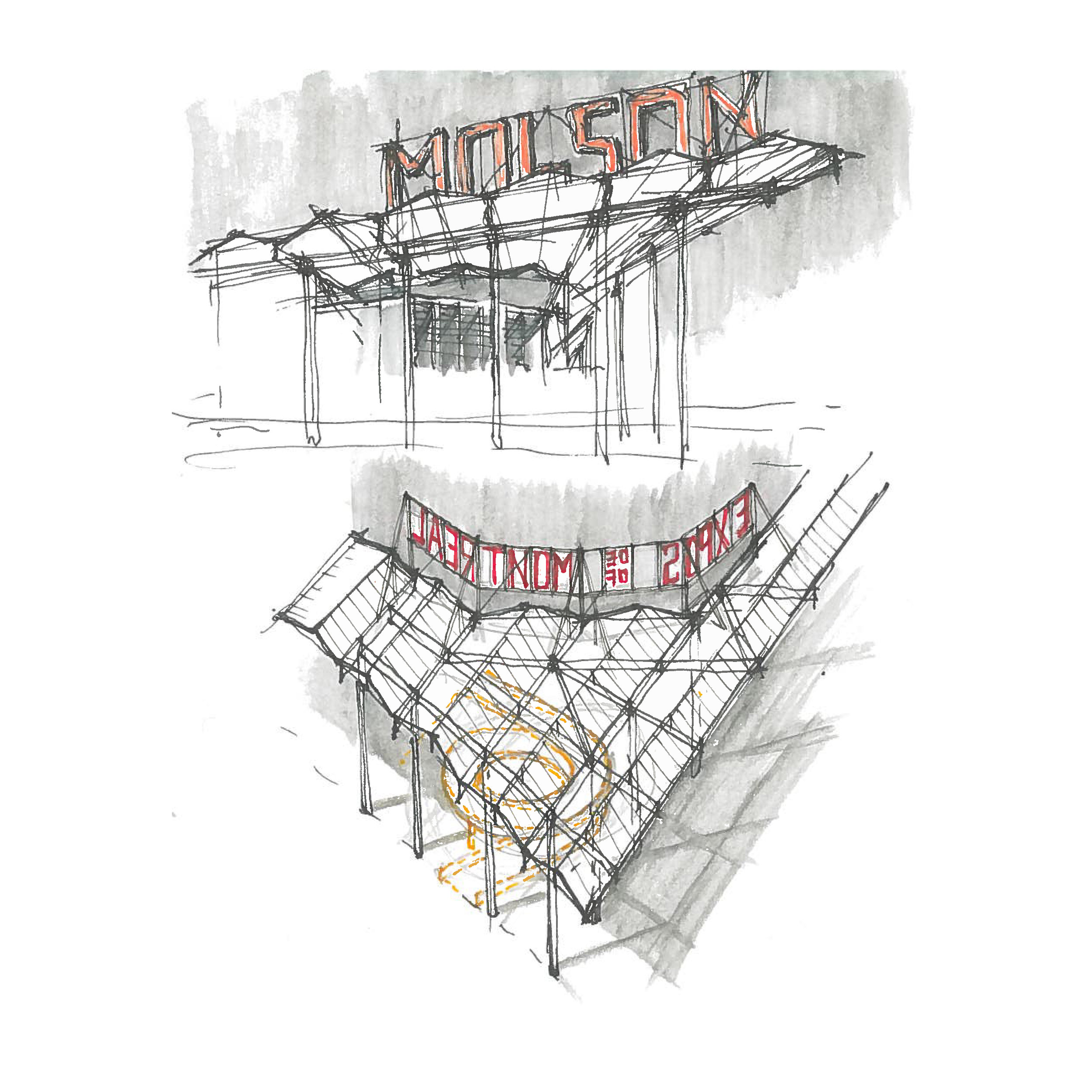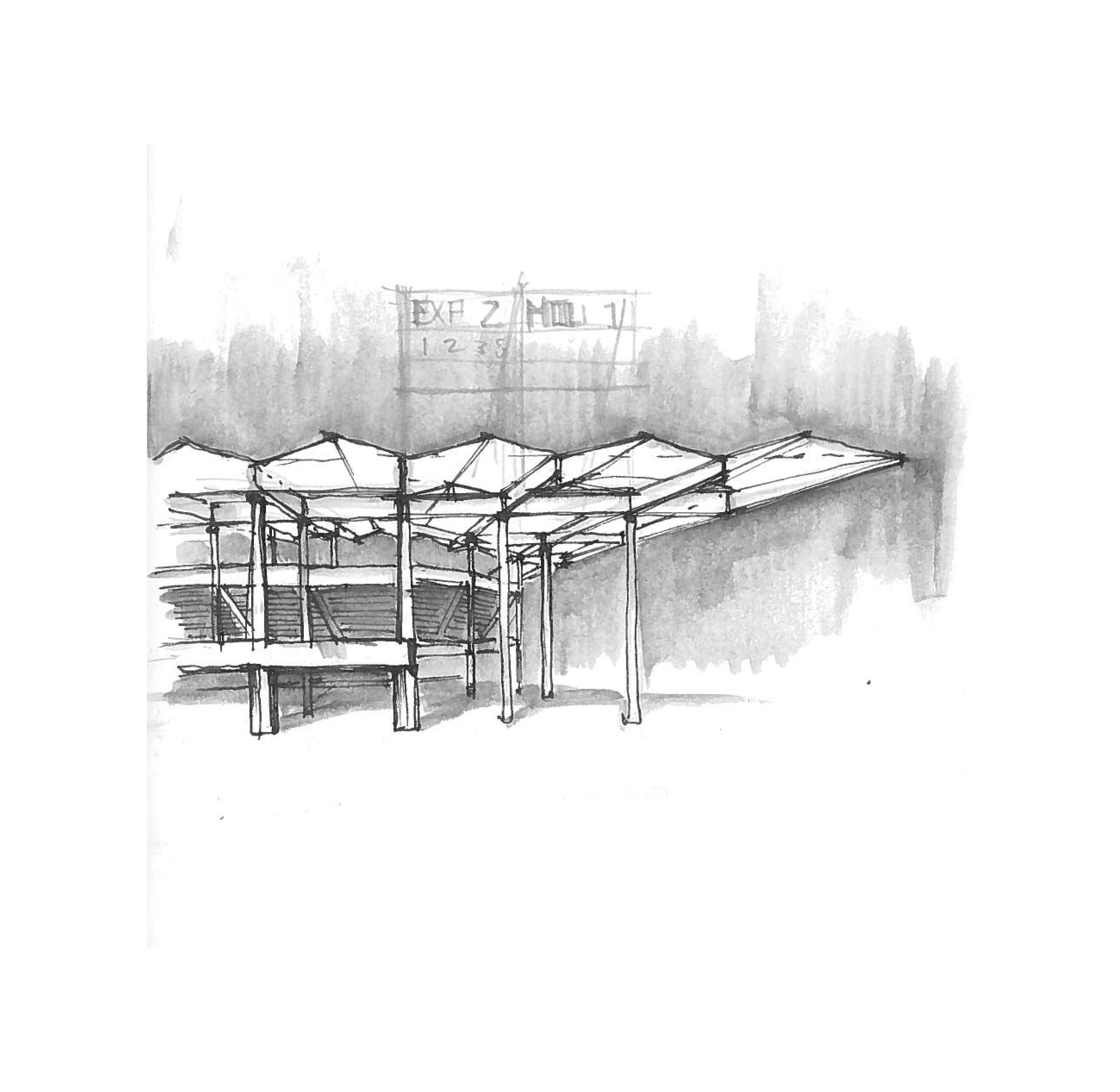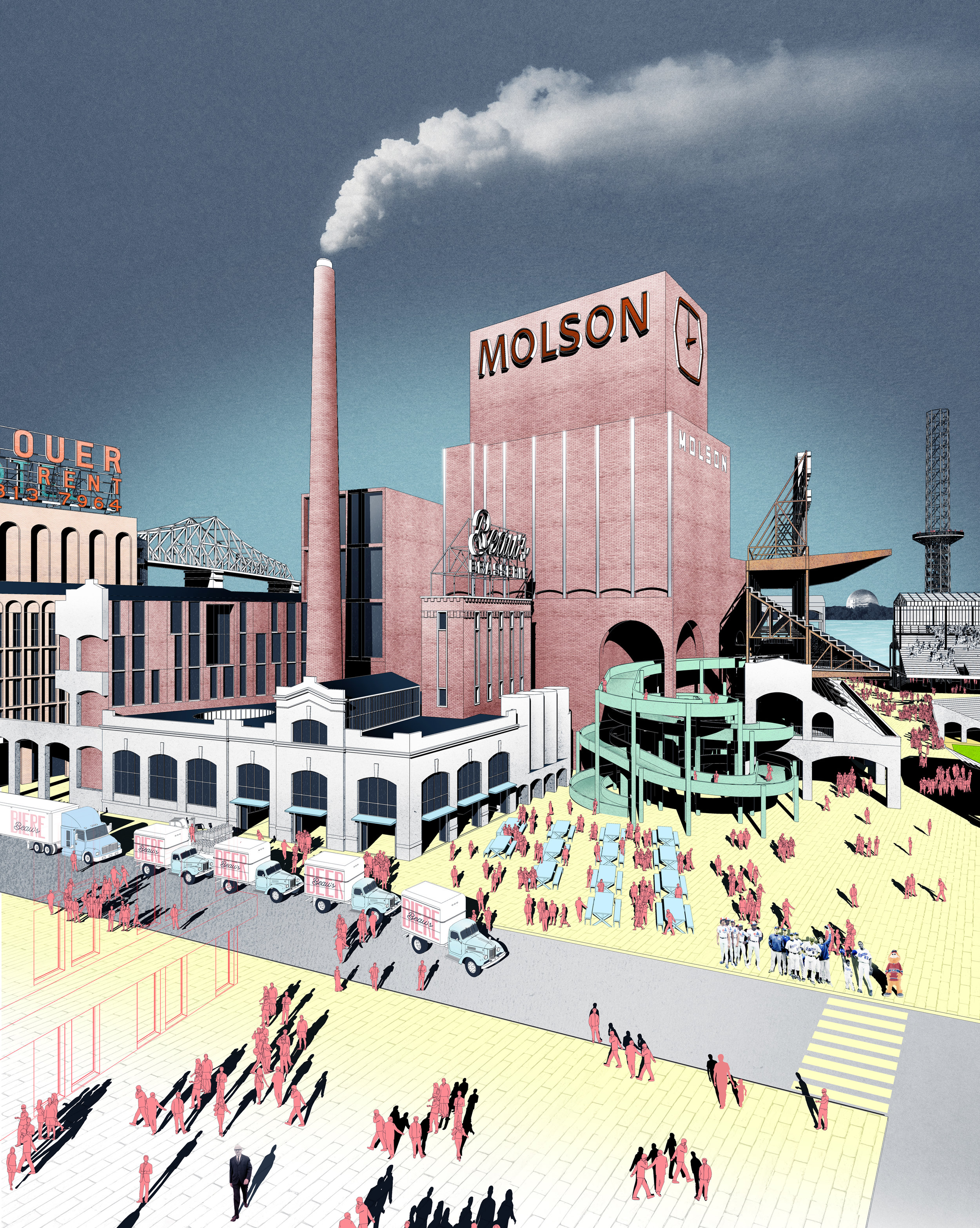

After a year of research and a month of travel, this Masters thesis proposes a critical take on the construction of a new ballpark for the impending return of the Montreal Expos, our city’s bygone Major League Baseball team. My research suggested that contemporary “urban” ballparks (an American model) had devolved into mere simulacra of their sometimes struggling cities. They are richly programmed and lively places on game day, but their many amenities—bars, restaurants, luxury boxes—are tucked away within the architectural section, privatized and serving only the paying customers for 80 days a year. Stadiums have become hermetic and exclusive. However, ballparks (and baseball) were born from the more complex, dense urban fabric of the 19th century industrial city: they emerged as distinct institutions, at once informal and elegant, popular and poised.
My project breaks down to the traditional components of a ballpark—seating structures, luxury boxes, food and beverage concessions—and weaves them into the vestigial, historical elements of Montreal’s redeveloped Molson Brewery. The ballpark is no longer a singular building; it is merged with new public spaces, new architectural programs, and existing infrastructural components (like a train yard). A modest industrial architectural language unifies these fragments, recalling the functional waterfront architecture that was once ubiquitous along the surrounding Saint Lawrence shoreline. Like a train station, the ballpark is now a node for people, commerce, and transit, where once there was only an impenetrable industrial complex (the brewery). The ballpark is now a means of reconnecting Montreal to the sport of baseball, where once it was hidden away in the overbearing and expensive Olympic Stadium (a failure). The ballpark is once again part of the city.
